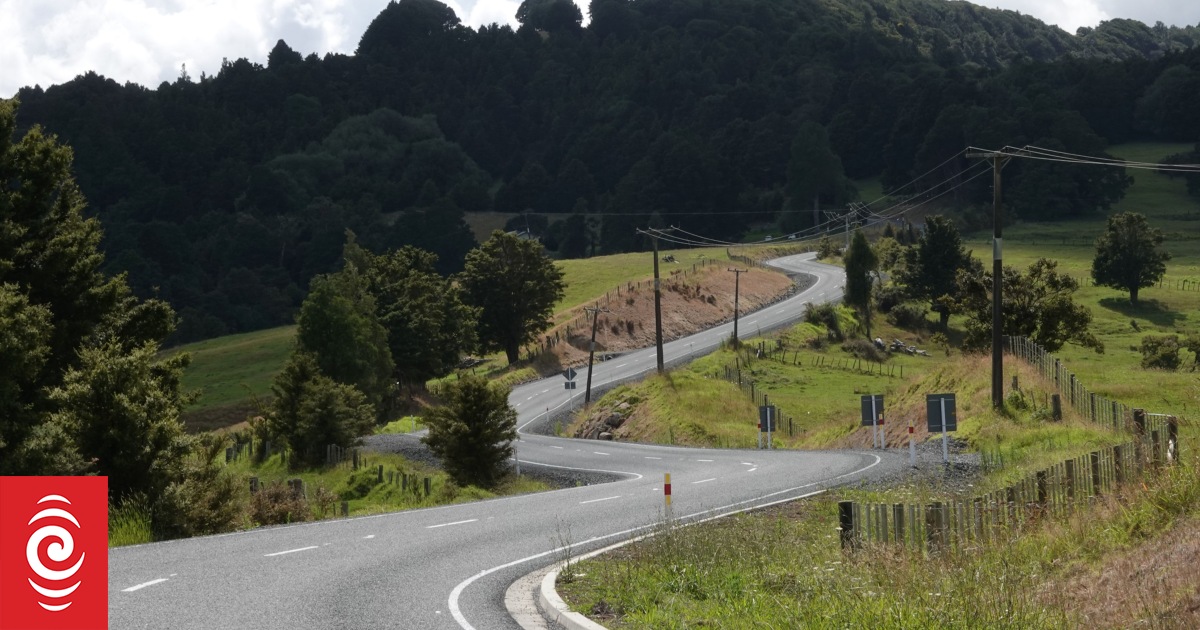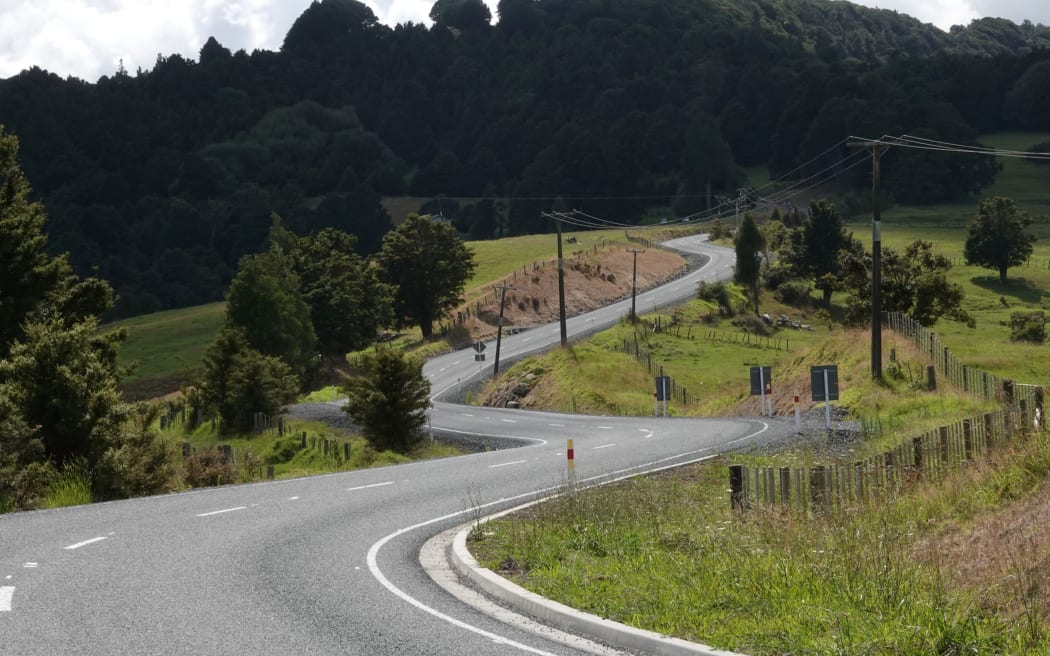
A 5.3km stretch of Ruapekapeka Road, from State Highway 1 to Ruapekapeka Pā, has been upgraded and sealed.
Photo: RNZ / Peter de Graaf
The sealing of a once perilous road means visitors to one of New Zealand’s most significant battle sites no longer have to risk life and limb to get there, an iwi leader says.
The 5.3km stretch of road, from State Highway 1 to Ruapekapeka Pā, near Kawakawa in the Far North, was blessed by hapū representatives on Friday.
Members of Te Ruapekapeka Trust also signed an action plan with the Department of Conservation, setting out a series of objectives for developing the site over the next three years.
That could include applying for UNESCO World Heritage status for the famed fighting pā.
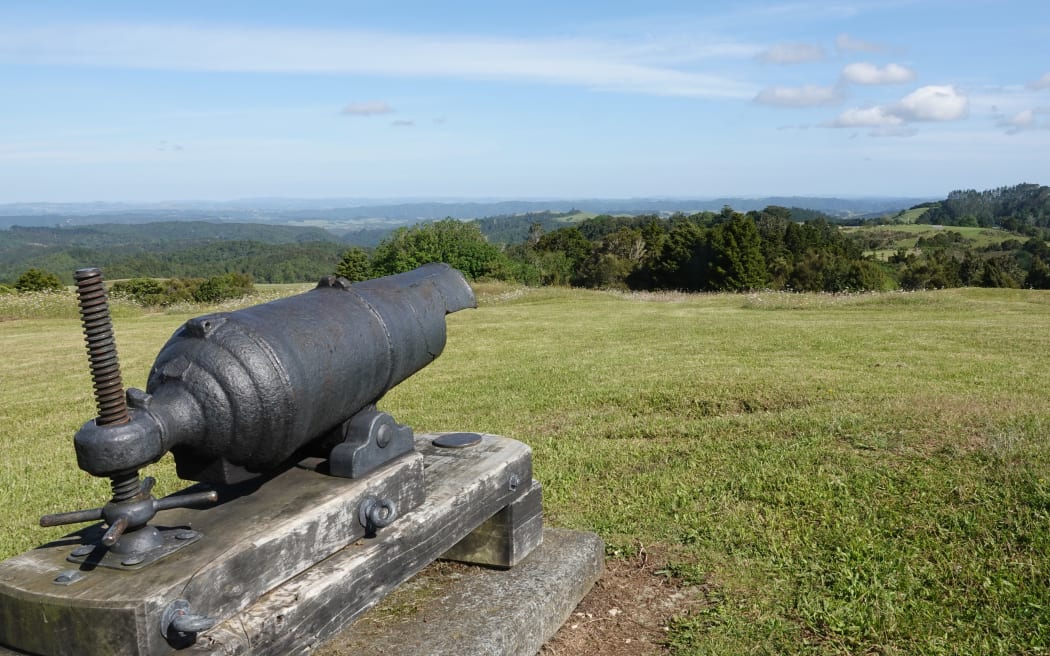
A carronade at Ruapekapeka Pā points towards the British position.
Photo: RNZ / Peter de Graaf
Ruapekapeka Pā was the scene of the final engagement of the Northern War of 1845-46, pitting 400 fighters led by chiefs Te Ruki Kawiti and Hone Heke against 1600 British troops and their Māori allies.
The pā is regarded as the pinnacle of Māori military engineering. Lessons learned by the British at Ruapekapeka were later applied in the Crimean War and the trench warfare of World War I.
Te Ruapekapeka Trust chairman Pita Tipene said, however, the state of the road meant the battle site used to be almost inaccessible.
“It deterred people from turning off the highway and coming up here for a start. Most people didn’t even know it existed. The signage on State Highway 1 was bad. But for those who knew the road, they had to negotiate a very perilous way up here,” he said.
Tipene said funding for the $6.5 million sealing and road improvement project came from the Provincial Growth Fund.
“We’re really grateful for [then regional development minister] Shane Jones for providing that leadership and heeding our word that the people of this country, and our international visitors, needed to have better access to such a significant site in the history of this country.”
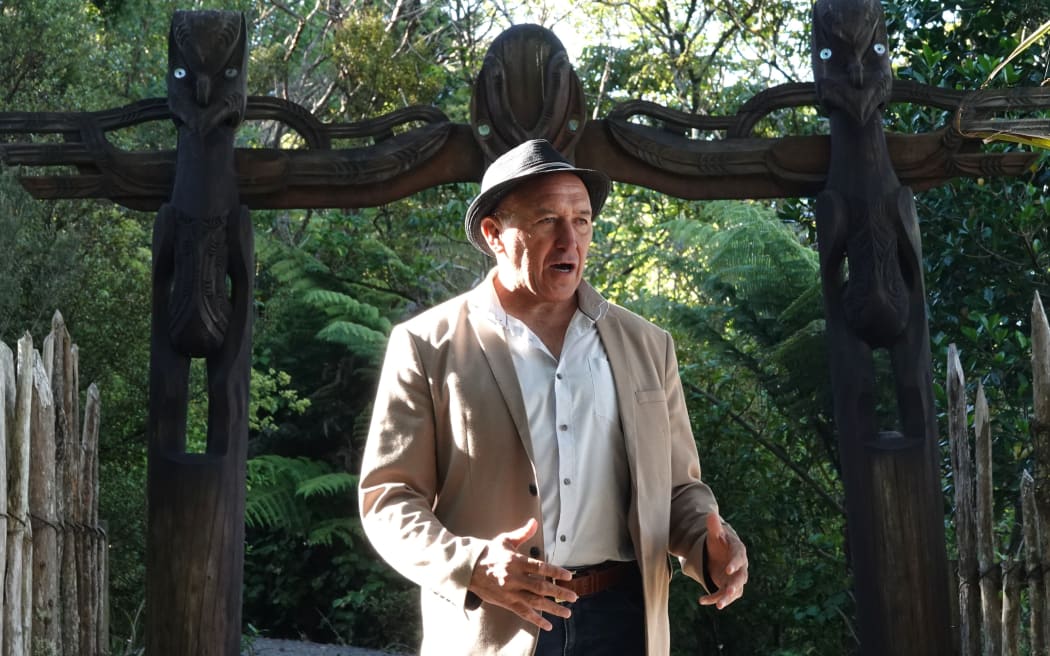
Te Ruapekapeka Trust chairman Pita Tipene (Ngāti Hine) speaks at the waharoa [gateway] to Ruapekapeka Pā.
Photo: RNZ / Peter de Graaf
The road upgrade was also important for local residents and motorists forced to use Ruapekapeka Road as a detour, as happened for months in 2014 when State Highway 1 was closed by a slip on Maromaku Hill.
The project, completed last year, included paving stones instead of tarseal at the intersection with Monument Road, to protect the roots of several large puriri trees at the pā entrance.
Improved access was part of the previous action plan agreed by the Department of Conservation and Te Ruapekapeka Trust, which is made up of representatives of Ngāti Hau, Ngāti Manu, Te Kapotai and Ngāti Hine.
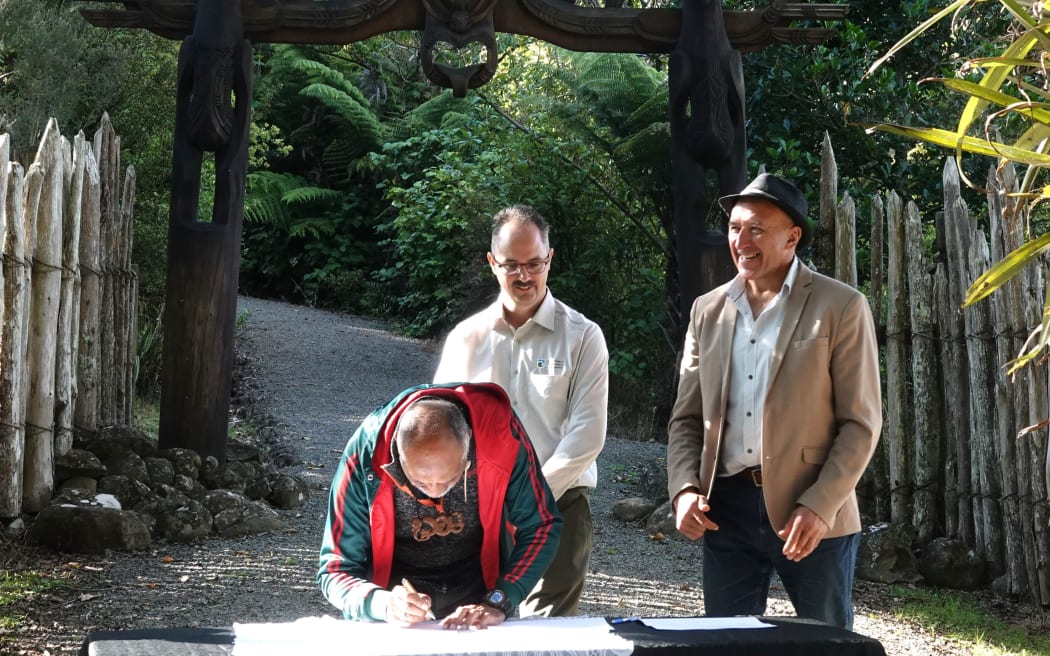
Te Kapotai representative Ned Peita signs the Ruapekapeka Pā Action Plan while DOC Whangārei operations manager Joel Lauterbach and Te Ruapekapeka Trust chairman Pita Tipene look on.
Photo: RNZ / Peter de Graaf
The new three-year action plan set out a series of tasks, such as erecting a pou at the intersection of State Highway 1 and Ruapekapeka Road so motorists know they are passing something of significance and are encouraged to visit.
The plan also committed to improving signage, pathways and maintenance.
Other goals included establishing clearer co-governance between DOC and the Trust, ahead of the land’s return to hapū as part of a future Treaty settlement, and potentially applying for World Heritage status.
Tipene drew a link between the events that triggered the Northern War of 1845-46 and the current controversy around Treaty principles.
He said Ruapekapeka Pā was a symbol of defiance against the Crown and the willingness of Kawiti, Hone Heke and others to “put their lives on the line” for He Whakaputanga (The Declaration of Independence) signed in 1835 and Te Tiriti o Waitangi in 1840.
“So only five years after putting their tohu, or signature, to those parchments, they could already see that it was being severely eroded. So I remind everybody of their motivation then, particularly now in 2024, when the Treaty is on everyone’s lips and the coalition government is pushing to review the principles of Te Tiriti o Waitangi and taking it to the select committee,” Tipene said.
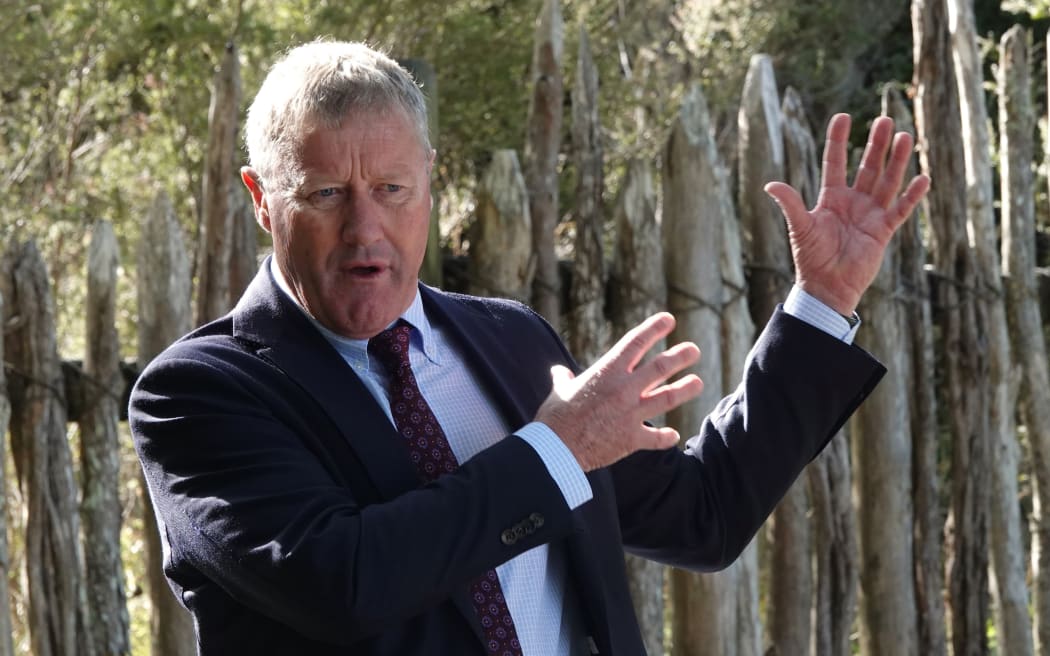
Northland MP Grant McCallum speaks at Ruapekapeka Pā.
Photo: RNZ / Peter de Graaf
Also taking part in Friday’s ceremony were Far North mayor Moko Tepania and deputy Kelly Stratford, local contractors who worked on the project, and Northland MP Grant McCallum.
McCallum said the much improved Ruapekapeka Road was proof “that we can build great roads in Northland”.
In 2008 Ruapekapeka Pā (literally “the bats’ nest”) was declared a national site of engineering significance by the Institute of Professional Engineers of New Zealand.
At the time, IPENZ heritage spokesman Trevor Butler said recognition of the pā as a historic engineering feat was “huge”.
Good engineering was more than just using the best materials and following a textbook, he said.
“Real engineering is the pondering of a problem not encountered before, considering options and developing an effective local specific solution. Ruapekapeka demonstrates all of these,” Butler said.
If Ruapekapeka was to become a UNESCO World Heritage site, it would be only the fourth in New Zealand. The three existing sites are Te Wāhipounamu-Southwest New Zealand, Tongariro National Park, and the Subantarctic Islands.
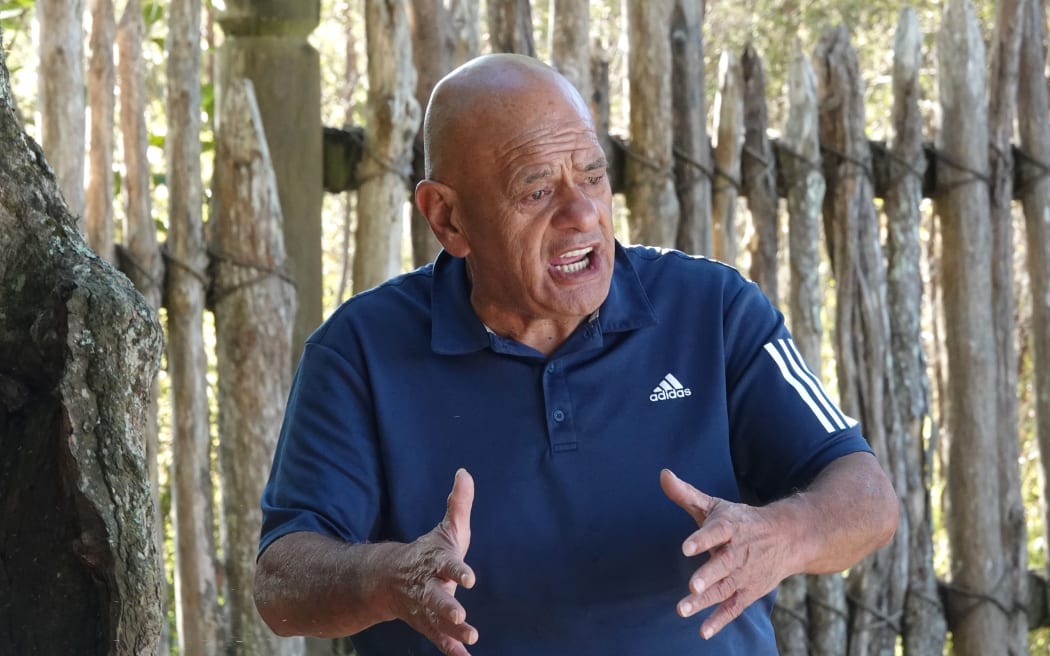
Ngāti Hine leader Waihoroi “Wassi” Shortland speaks at Ruapekapeka Pā.
Photo: RNZ / Peter de Graaf

